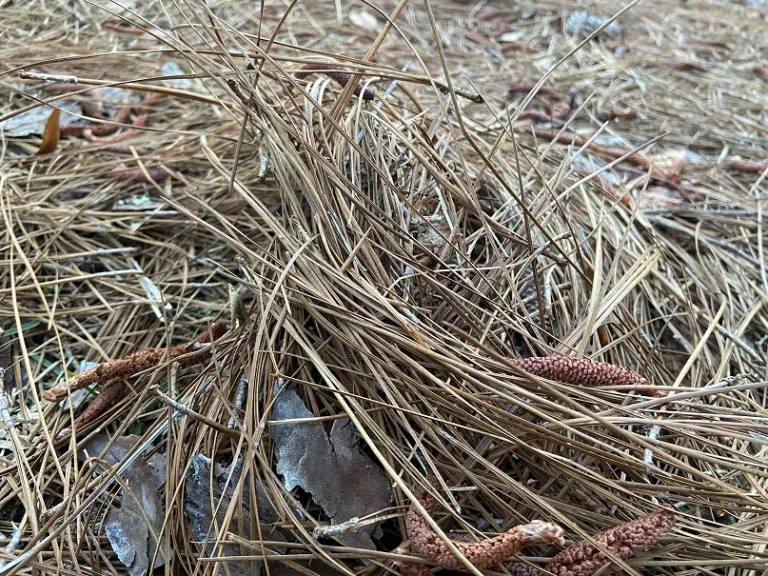
What’s the Deal with Mulch? 4 Mulches Worthy of Consideration

It sounds like Jerry Seinfeld about to begin a comedy routine… It’s brown, it’s red, it’s black, it’s tan! What’s up with mulch!? Okay, this is probably where I leave my comedy career at the door. While I may not be able to work out a great routine to make mulch funny, I can tell you how it’s useful – and how it comes in a number of different forms!

My first thought when it comes to mulch is of aged wood chips, often dyed brown. Oh boy was I surprised when I first came down to South Carolina and saw a bed filled with pine straw! I was so surprised, in fact, that I asked the director of horticulture that was showing me the garden if they planned to clean up all the pine needles, or if they left them there. Yikes! I’ve learned a thing or two since then and am pleased to share with you some mulch options that we use here at Brookgreen that may also work well for your home garden!
What Does Mulch Do?
Before we jump into all of our mulch choices, we should first take a look at what mulch even does. By putting down mulch, you help to retain soil moisture, suppress pesky weeds, and regulate the soil temperature. If you use an organic mulch, such as wood chips or leaf litter, it will also break down over time and feed your soil, which in turn will feed your plants. It doesn’t get much better than that!

While mulch offers a lot of practical benefits, it also offers a very simple, and maybe even superficial one too: it dresses up a space! As you can see above, our new Salvia display in the Upper Left Wing is pictured before mulch has been placed on site. The image below shows the same location after it has been given the mulch treatment!
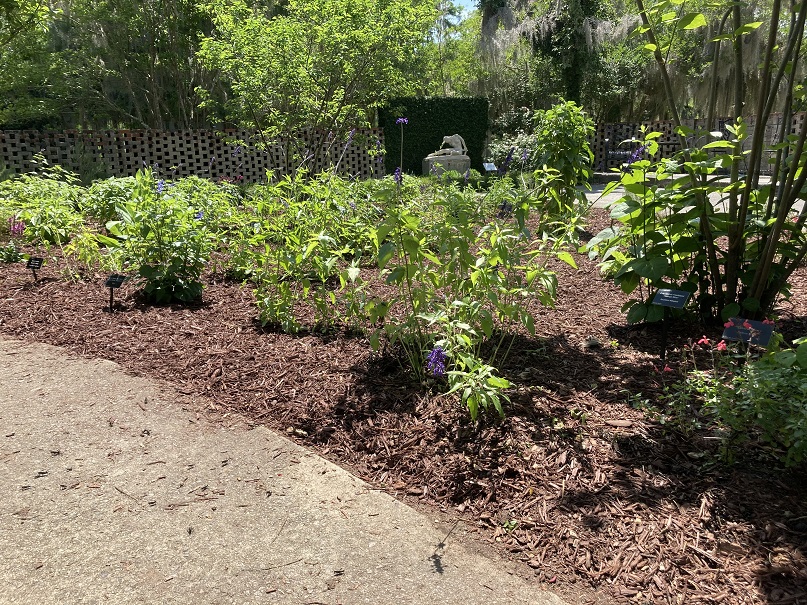
Now that we know what mulch does, let’s take a look at a few great options.
1. Pine Straw
Let’s start with the mulch that turned me from horticulturist to contortionist, as I put my foot in my mouth those years ago! Pine straw is a fairly common form of mulch in our area. It is simply harvested pine needles that have fallen from pine trees as they shed their old needles to make room for their new ones.
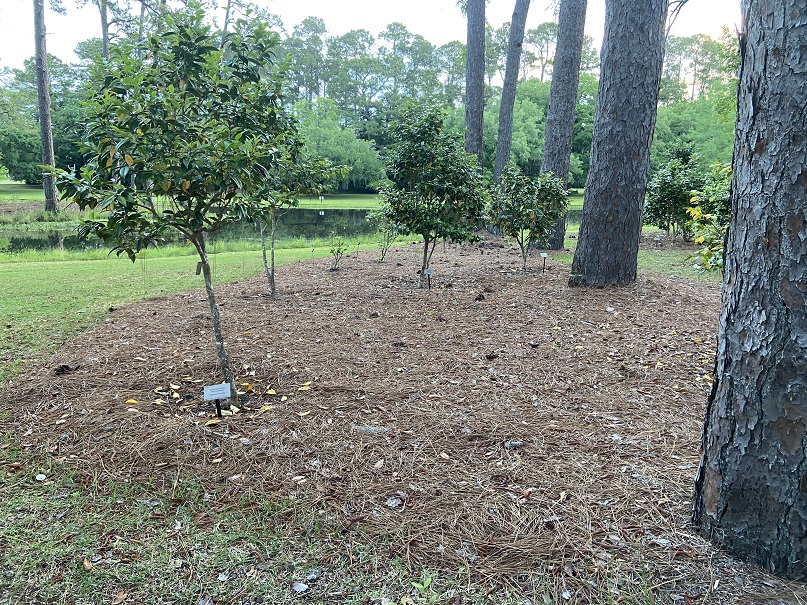
We use pine straw in our camellia collection. With so many pine trees surrounding the camellias, it is easy to take advantage of what nature has to offer!

2. Wood Mulch
This is the mulch that always comes first to mind for me. Wood mulch, which can come from different trees and can be dyed or its natural color, is what you see most in our gardens.

Wood chips are also sometimes used in our gardens, but are typically not used around our annuals or herbaceous plants, but are reserved for shrubs, trees, and for use as natural paths. Fresh wood chips tend to take some of the nitrogen out of the soil as they begin to decompose, which can then lead to a shortage for our hungry plants! To avoid this, we simply use our more aged wood mulch in these areas.

3. Natural Mulch
Sometimes it just works when you let nature provide. In Live Oak Allée, you can catch a glimpse of some of our natural mulch, consisting mainly of fallen leaves from the live oaks above. When the oaks start to drop their leaves, instead of removing them from the gardens, they instead get incorporated into the beds, creating a helpful layer of mulch.

Keeping the leaves on site is helpful in providing a habitat for insects, as many will make their homes within the leaves. Natural mulch is so beneficial that Cheney Taylor, one of our horticulturists, shared some of his wisdom about it in an upcoming video – keep an eye out for it, coming soon!
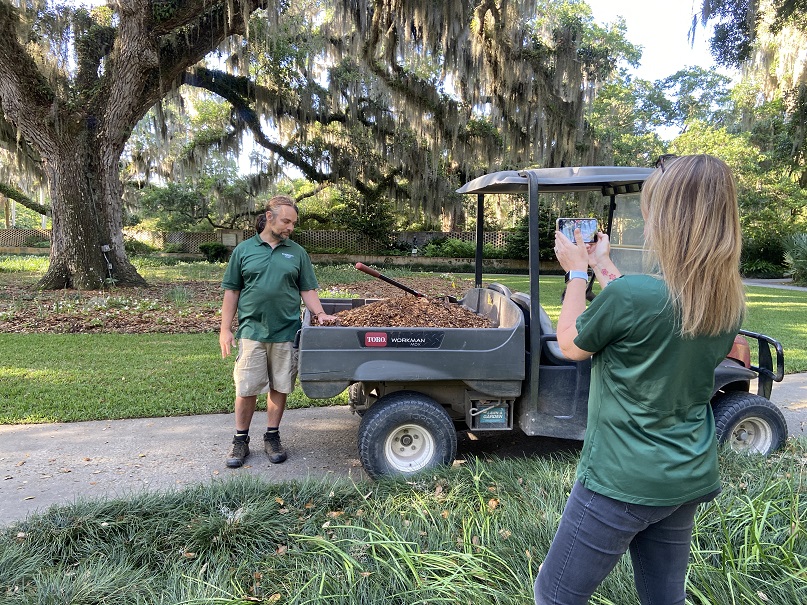
4. Living Mulch
Mulch that is alive sounds like something that would bust out of a sci-fi movie, but trust me, it’s not a bad thing! Another form of mulch is using plants as mulch. Instead of having bare space that is filled with another type of mulch, or worse – nothing at all! – you can use plants to cover the space.

My thoughts immediately go to groundcovers when I think of a living mulch. Things like our Marlberry (Ardisia japonica 'Ito-Fukurin') in the Lower Left Wing, pictured above, work to cover the ground, while also adding an ornamental touch.

Another living mulch is in the Poetry Garden and the White Garden, where we have used dichondra (Dichondra argentea ‘Silver Falls’) as an attractive living mulch. While we certainly appreciate the way mulch can dress up a garden, it’s hard to argue that anything can dress up a garden better than more plants!
How to Apply Mulch
Depending on the mulch you are using will dictate how you apply it. In the case of pine straw and wood-based mulches, you will simply want to spread the mulch on the ground around the plants, creating a layer a few inches thick. When adding mulch, especially around woody plants, you want to leave a little bit of breathing room for the plant, and not push mulch right up against the trunks or stems. Since mulch is so good at retaining soil moisture, we don’t want it to be keeping the area on trees and shrubs so consistently wet that it could encourage problems like rotting.
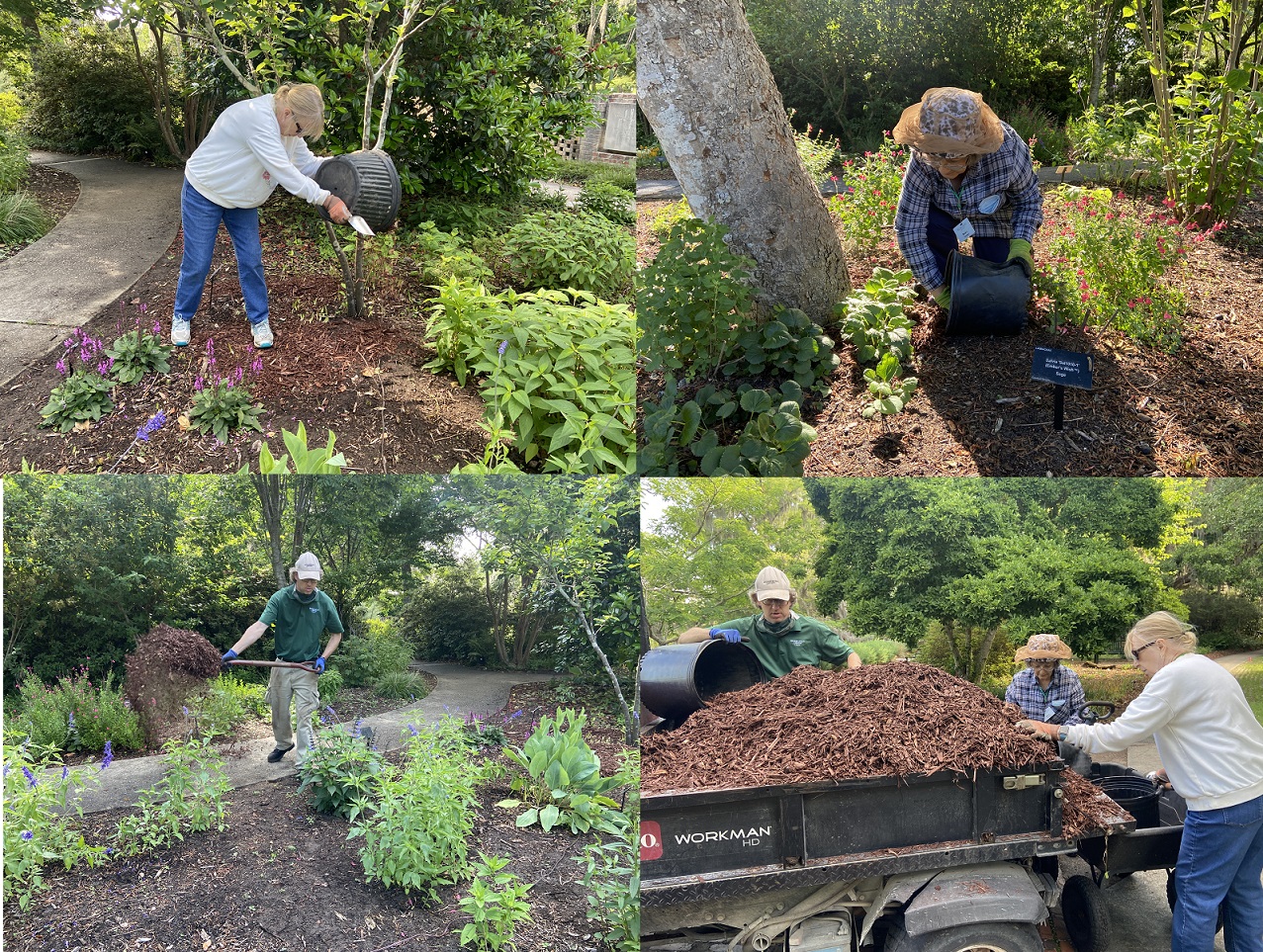
Here at Brookgreen, we apply aged wood mulch by either using a pitchfork or scoop shovel to place it in the beds. When our volunteers join us to spread mulch, they often deploy the use of buckets to help move the mulch throughout the bed. Many hands not only make light work, but also fast work!
Mulch is an important part of keeping our gardens looking tidy and helping us to manage our landscape in an eco-friendly way! With so many choices, what kind of mulch will you use in your garden?
See you in the Gardens!
Hours
Hours: Monday & Tuesday 9:30 AM - 5:00 PM
Wednesday - Sunday 4:00 PM - 9:00 PM
For daytime admission, gates close at 4:30 PM. For their safety and the safety of our animal collection, pets are not allowed, nor can they be left in vehicles inside Brookgreen. Service animals that have received special training to assist disabled persons are welcome.
Tickets
Daily General Admission Tickets for 7 consecutive days
Children 3 and under: Free
Children 4-12: $14
Adults 13-64: $25
Seniors 65 & Over: $23
Location
1931 Brookgreen Drive
Murrells Inlet, SC 29576
Off US Highway 17 Bypass, between Murrells Inlet and Pawleys Island on South Carolina's Hammock Coast
843-235-6000
GOOGLE DIRECTIONS